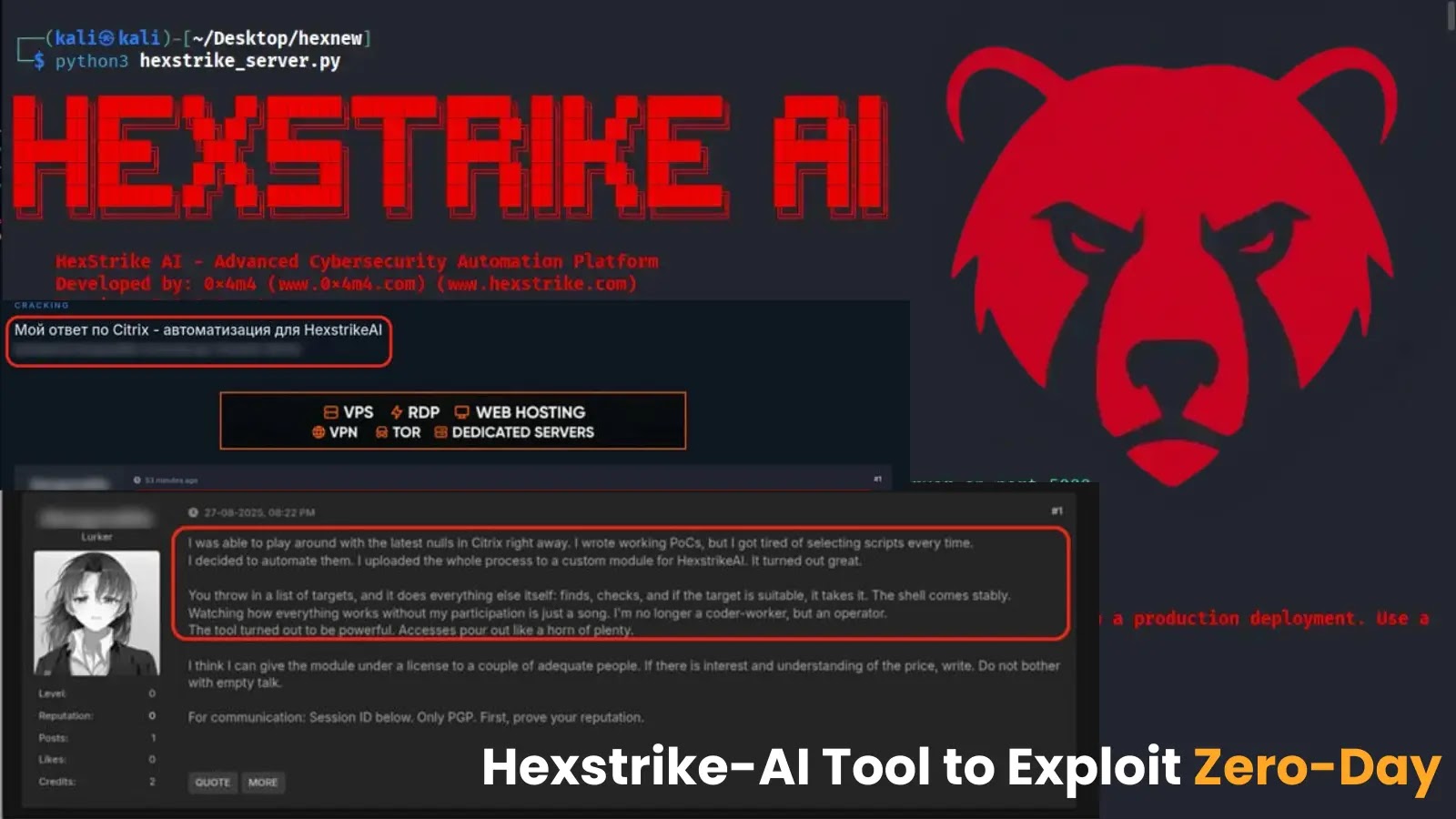
Hackers Leverage Hexstrike-AI Tool to Exploit Zero Day Vulnerabilities Within 10 Minutes
The cybersecurity landscape has just been fundamentally reshaped. Threat actors are now leveraging an advanced AI tool, Hexstrike-AI, to identify and exploit zero-day vulnerabilities in a staggering ten minutes or less. This alarming development demands immediate attention from every organization, red team, and security professional.
Hexstrike-AI: A New Era of Automated Exploitation
Hexstrike-AI, originally conceived and marketed as a powerful offensive security framework for legitimate red team operations, has almost instantly become a weapon in the hands of malicious operators. Within hours of its public release, its sophisticated architecture was repurposed, enabling automated discovery and exploitation of zero-day Common Vulnerabilities and Exposures (CVEs).
The speed at which Hexstrike-AI operates is unprecedented. Traditional vulnerability discovery and exploitation can take days, weeks, or even months. This AI-powered framework dramatically compresses that timeline, allowing threat actors to scan for hitherto unknown flaws and then capitalize on them with alarming efficiency. This rapid weaponization of AI presents an existential challenge to conventional security defenses.
The Mechanics of Rapid Zero-Day Exploitation
Hexstrike-AI’s core capability lies in its ability to automate the entire zero-day exploitation lifecycle. While specific technical details of its inner workings are still emerging, its observed behavior suggests it performs advanced reconnaissance, vulnerability identification through novel methods (likely beyond signature-based detection), and then rapidly crafts and deploys exploits. This automation significantly lowers the barrier to entry for exploiting complex zero-day flaws, enabling a larger pool of threat actors to engage in such sophisticated attacks.
The implications are profound. Organizations now face the threat of newly discovered vulnerabilities being exploited before any patch or even public disclosure becomes available. This “zero-day window” has effectively shrunk to mere minutes, leaving little to no time for defensive measures once a weakness is identified.
Immediate Implications for Cybersecurity Defenses
The advent of tools like Hexstrike-AI necessitates a fundamental shift in defensive strategies. Relying solely on patching known vulnerabilities after their public disclosure is no longer sufficient. Proactive defense, robust threat intelligence, and advanced detection mechanisms become paramount.
- Shortened Remediation Timelines: The window for patching and responding to a zero-day has virtually closed.
- Increased Attack Surface: Every unpatched and undiscovered vulnerability becomes an immediate critical risk.
- Sophisticated Adversaries: Less skilled adversaries can now wield highly advanced exploitation capabilities.
- Need for Proactive Threat Hunting: Organizations must actively hunt for anomalous behavior and potential exploitation attempts rather than waiting for alerts.
Remediation Actions and Proactive Defense Strategies
In this new threat landscape, effective remediation and proactive defense are critical. Organizations must move beyond reactive patching to embrace a more resilient security posture.
Strategic Imperatives:
- Embrace a Zero-Trust Architecture: Assume compromise and strictly verify every access attempt and process. This limits lateral movement even if an initial breach occurs through a zero-day exploit.
- Implement Robust Network Segmentation: Isolate critical systems and data. If a zero-day exploit compromises one segment, its impact can be contained, preventing wider network compromise.
- Prioritize Continuous Vulnerability Management: Even with the threat of zero-days, diligent patching of known CVEs remains essential, as they often serve as initial entry points for more complex attacks.
- Invest in Advanced Endpoint Detection and Response (EDR) and Extended Detection and Response (XDR) Systems: These solutions can detect post-exploitation activities and anomalous behaviors that might indicate a successful zero-day exploit, even if the initial vulnerability was unknown.
- Enhance Threat Intelligence Gathering: Stay abreast of emerging offensive tools and techniques being developed and used by threat actors, particularly those involving AI.
- Conduct Regular and Advanced Penetration Testing: Go beyond standard vulnerability scanning. Conduct tests that simulate sophisticated attacker methodologies, including potential zero-day exploitation attempts.
- Develop and Practice Incident Response Plans: A well-defined and frequently rehearsed incident response plan is crucial for minimizing damage and recovery time after a successful zero-day attack.
- Leverage AI and Machine Learning for Defense: Fight AI with AI. Deploy defensive AI solutions that can analyze vast amounts of data to detect subtle indicators of compromise (IoCs) and anomalous patterns that might precede or follow a zero-day exploit.
Technical & Tool-Based Remediation:
While direct remediation for an unknown zero-day is impossible, tools exist to enhance detection, response, and overall cyber hygiene that can mitigate the impact of such attacks.
| Tool Name | Purpose | Link |
|---|---|---|
| Tenable.io / Nessus | Vulnerability Management & Scanning | https://www.tenable.com/products/tenable-io |
| CrowdStrike Falcon Insight XDR | Endpoint Detection & Response (EDR) / XDR | https://www.crowdstrike.com/products/endpoint-security/falcon-insight-xdr/ |
| Palo Alto Networks Cortex XDR | Extended Detection & Response (XDR) | https://www.paloaltonetworks.com/cortex/cortex-xdr |
| Splunk Enterprise Security | SIEM & Security Analytics | https://www.splunk.com/en_us/software/enterprise-security.html |
| Volexity Surge | Threat Intelligence & Hunting | https://www.volexity.com/detections-and-intel |
Conclusion: Adapting to the New Pace of Threat
The rapid weaponization of Hexstrike-AI to exploit zero-day vulnerabilities in under ten minutes represents a critical inflection point in cybersecurity. This shift demands a proactive, agile, and AI-augmented defensive posture. Organizations must prioritize robust detection capabilities, strong network segmentation, strict zero-trust principles, and well-rehearsed incident response plans. The race to secure systems against unknown threats has intensified, and only those who adapt swiftly will truly be prepared for the automated onslaught.





